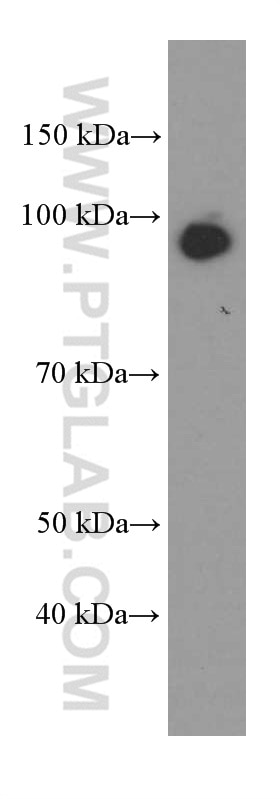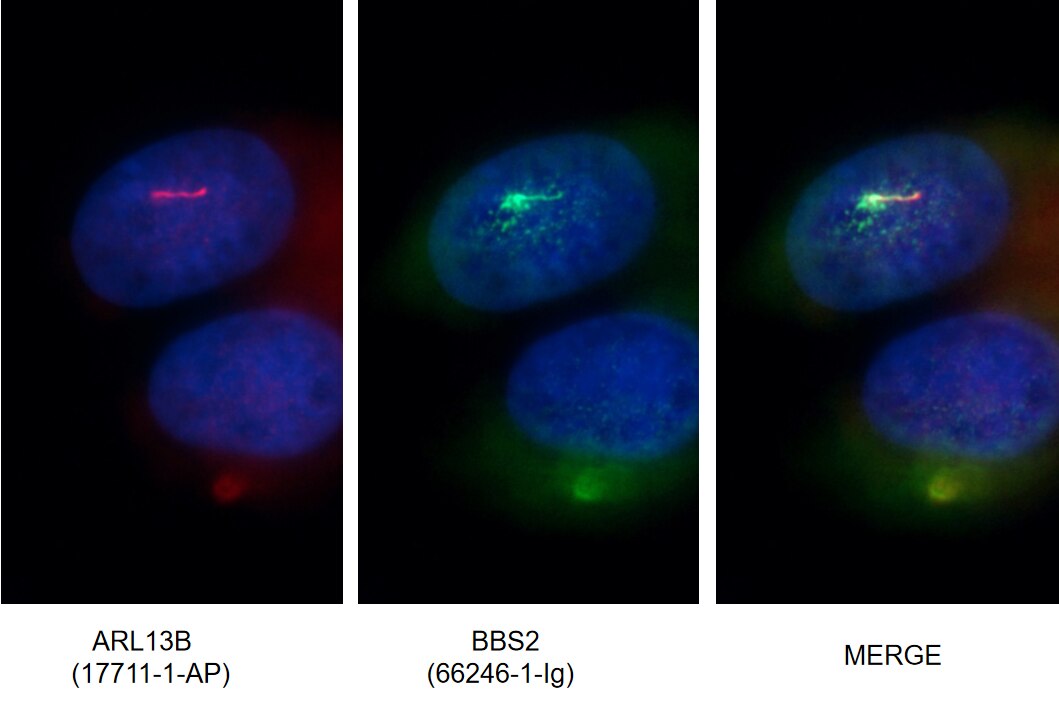BBS2 Monoklonaler Antikörper
BBS2 Monoklonal Antikörper für IF, WB, ELISA
Wirt / Isotyp
Maus / IgG3
Getestete Reaktivität
human, Hund und mehr (1)
Anwendung
WB, IF, ELISA
Konjugation
Unkonjugiert
CloneNo.
2E11B3
Kat-Nr. : 66246-1-Ig
Synonyme
Galerie der Validierungsdaten
Geprüfte Anwendungen
| Erfolgreiche Detektion in WB | K-562-Zellen |
| Erfolgreiche Detektion in IF | MDCK-Zellen |
Empfohlene Verdünnung
| Anwendung | Verdünnung |
|---|---|
| Western Blot (WB) | WB : 1:500-1:2000 |
| Immunfluoreszenz (IF) | IF : 1:20-1:200 |
| It is recommended that this reagent should be titrated in each testing system to obtain optimal results. | |
| Sample-dependent, check data in validation data gallery | |
Veröffentlichte Anwendungen
| WB | See 2 publications below |
Produktinformation
66246-1-Ig bindet in WB, IF, ELISA BBS2 und zeigt Reaktivität mit human, Hund
| Getestete Reaktivität | human, Hund |
| In Publikationen genannte Reaktivität | human, Maus |
| Wirt / Isotyp | Maus / IgG3 |
| Klonalität | Monoklonal |
| Typ | Antikörper |
| Immunogen | BBS2 fusion protein Ag21390 |
| Vollständiger Name | Bardet-Biedl syndrome 2 |
| Berechnetes Molekulargewicht | 80 kDa |
| Beobachtetes Molekulargewicht | 80-90 kDa |
| GenBank-Zugangsnummer | BC014140 |
| Gene symbol | BBS2 |
| Gene ID (NCBI) | 583 |
| Konjugation | Unkonjugiert |
| Form | Liquid |
| Reinigungsmethode | Protein-A-Reinigung |
| Lagerungspuffer | PBS mit 0.02% Natriumazid und 50% Glycerin pH 7.3. |
| Lagerungsbedingungen | Bei -20°C lagern. Nach dem Versand ein Jahr lang stabil Aliquotieren ist bei -20oC Lagerung nicht notwendig. 20ul Größen enthalten 0,1% BSA. |
Protokolle
| Produktspezifische Protokolle | |
|---|---|
| WB protocol for BBS2 antibody 66246-1-Ig | Protokoll herunterladen |
| IF protocol for BBS2 antibody 66246-1-Ig | Protokoll herunterladen |
| Standard-Protokolle | |
|---|---|
| Klicken Sie hier, um unsere Standardprotokolle anzuzeigen |
Publikationen
| Species | Application | Title |
|---|---|---|
Mol Cell Proteomics CRISPR/Cas9-mediated genomic editing of Cluap1/IFT38 reveals a new role in actin arrangement. | ||
J Biol Chem The myosin-tail homology domain of centrosomal protein 290 is essential for protein confinement between the inner and outer segments in photoreceptors. |



